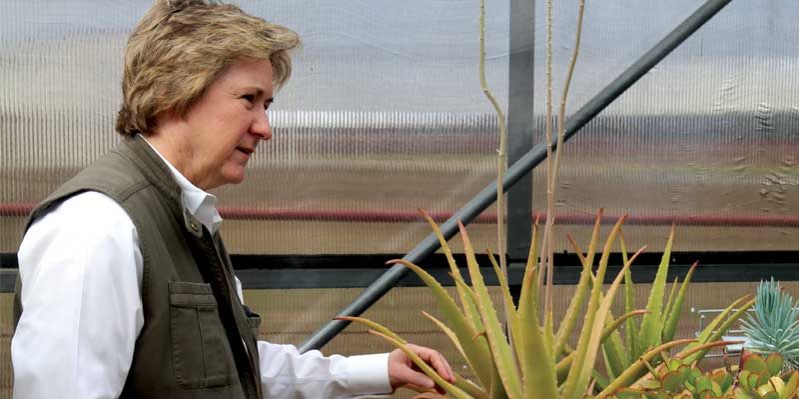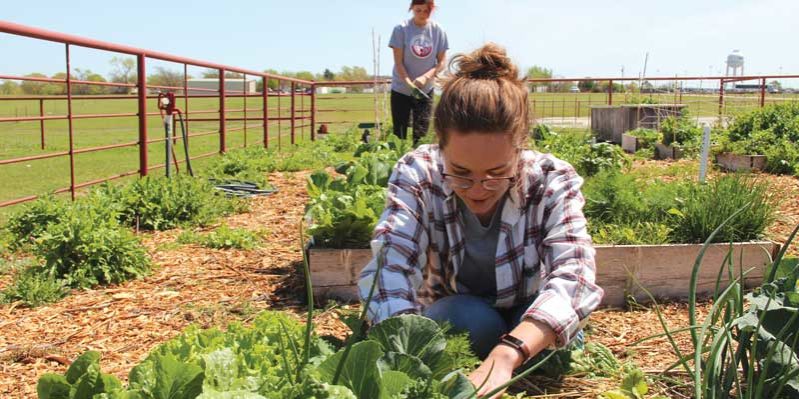
Sustainability is a central theme of NCTC’s agricultural programs, and Science division chair Lisa Bellows says it’s a crucial issue facing the next generation of farmers and ranchers.
“Sustainable farming is very different than the traditional model,” Bellows explains. “We really need to adopt an approach of allowing our land to tell us what to do instead of us telling the land what to do.”
According to Bellows, many traditional practices in the agricultural industry are counterintuitive and actually create more problems. For instance, there’s the practice of supplementing feed during a drought.
“When a drought turns the land into a desert and the cows start starving, farmers will bring in a bunch of feed to give them,” she says. “But, they’re still taxing the land and spending money on supplementation … and all the while, the land doesn’t have a chance to recover.”
With sustainability in mind, NCTC’s Farm & Ranch Management program has made some logistical changes this semester, moving some of its lifestock — including a herd of 25 registered Red Angus cows — from a 106-acre property located 20 minutes east of Gainesville to the department’s hub of sustainable land management, the PACE Project, located just south of Gainesville High School and a half-mile from NCTC’s Gainesville campus.
PACE stands for Promoting Agriculture and Conservation Education and the PACE Project represents a partnership between NCTC and the Gainesville Independent School District, with the college leasing the land from the GISD, and holistically managing it. Another collaborator in the PACE project is the Dixon Water Foundation, a nonprofit organization that manages five working ranches spread across North Central and South Texas, applying sustainable land management practices to restore plant diversity, promote healthy watershed conditions and maintain thriving wildlife habitats.
A primary habitat management technique of PACE, for instance, is holistic planned grazing, a practice designed to mimic the historic grazing of large herds for short periods of time, followed by a long recovery period. Livestock are grouped together to graze in small paddocks on a rotational basis, resulting in high stock density for brief periods of time. As the livestock walk, graze and deposit manure and urine, the soil is stimulated to cycle minerals.
Similarly, vegetation monitoring is used to adjust grazing management plans, and goats might be employed to help reduce woody and invasive plant species.
It’s ever-changing,” Bellows says. “Like we just bought our sixth group of show goats from a county show, and we’re using them for brush suppression. We’ll keep them there through October — while the trees have leaves. Once the trees lose their leaves, we won’t need them and we’ll sell them — or butcher them. This past fall, we had some of our goats processed and sold out of goat meat in less than two hours.””
The PACE property spans 165 acres — 75 acres of wooded areas and 90 acres of prairie — and Bellows says the program also employs another 53 acres on campus, plus a 40-acre hayfield. These facilities enhance classroom instruction with hands-on educational experiences applicable to the management of farms, ranches and other agricultural businesses. The department offers both a two-semester Agriculture Management Certificate and a four-semester Associate of Applied Sciences in Farm and Ranch Management, with sustainable agriculture coursework that includes animal science, beef cattle production, pasture management, livestock business, wildlife management, sustainability, basic shop classes, and animal nutrition.




